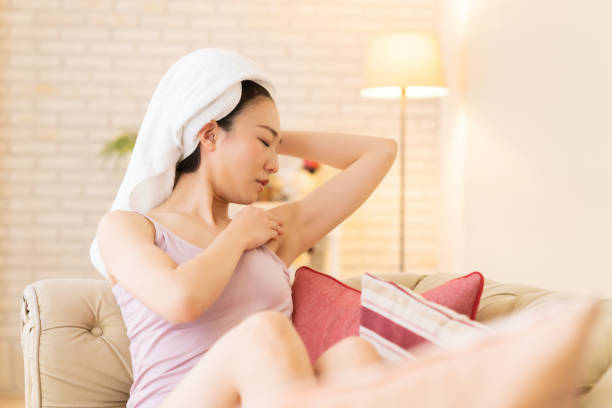Introduction
Pimples on armpits, though not uncommon, can be bothersome and sometimes painful. This comprehensive guide aims to provide insights into the causes, prevention, and effective management of armpit pimples for a healthier and more comfortable experience.
II. Causes of Armpit Pimples
A. Poor Hygiene Practices
Inadequate cleansing of the armpits can lead to the accumulation of sweat, bacteria, and dead skin cells, creating an environment conducive to pimple formation.
B. Friction and Irritation
Constant friction from tight clothing or harsh fabrics can irritate the sensitive skin in the armpits, triggering the development of pimples.
C. Deodorant or Antiperspirant Allergies
Ingredients in deodorants or antiperspirants, such as fragrances or preservatives, may cause allergic reactions, resulting in pimple-like bumps.
D. Ingrown Hairs
Improper shaving or hair removal techniques can lead to ingrown hairs, contributing to the formation of painful and inflamed pimples.
III. Identifying Different Types of Pimples
A. Whiteheads and Blackheads
Whiteheads are closed, while blackheads are open, both caused by clogged pores and excess oil.
B. Pustules and Papules
Pustules contain pus, while papules are small, raised, and inflamed bumps.
C. Cysts and Nodules
Deeper and more severe than other types, cysts and nodules may require professional intervention for proper treatment.
IV. Prevention Strategies
A. Proper Hygiene Practices
Regular and thorough cleansing of the armpits helps prevent the accumulation of bacteria, sweat, and dead skin cells.
B. Choosing Suitable Deodorants
Opting for deodorants without harsh chemicals or allergens can reduce the risk of skin reactions and pimple formation.
C. Wearing Breathable Fabrics
Choosing loose, breathable fabrics allows proper air circulation, minimizing friction and irritation.
D. Hair Removal Techniques
Adopting gentle and proper hair removal techniques reduces the likelihood of ingrown hairs and subsequent pimple development.
V. Home Remedies for Armpit Pimples
A. Warm Compress
Applying a warm compress can help reduce inflammation and promote drainage of pimple contents.
B. Tea Tree Oil
Known for its antibacterial properties, tea tree oil can be applied topically to help fight infection and reduce pimple size.
C. Aloe Vera Gel
Aloe vera’s soothing properties can alleviate discomfort and aid in the healing process.
D. Apple Cider Vinegar
Diluted apple cider vinegar acts as an astringent, helping to unclog pores and prevent further pimple development.
VI. Medical Treatment Options
A. Topical Antibiotics
Dermatologist-prescribed antibiotics can help control bacterial growth and reduce inflammation.
B. Corticosteroid Creams
Topical corticosteroids can alleviate inflammation and discomfort associated with armpit pimples.
C. Antibacterial Washes
Medicated washes containing antibacterial agents may be recommended to maintain armpit hygiene.
D. Professional Extraction
Dermatologists can perform professional extraction to drain and remove persistent or large pimples safely.
VII. When to Seek Medical Advice
A. Persistent or Severe Pimples
Pimples that persist or worsen despite home remedies may require professional evaluation.
B. Signs of Infection
Symptoms such as increased redness, warmth, or pus may indicate an infection requiring medical attention.
C. Recurrent Ingrown Hairs
If ingrown hairs become a recurring issue, a dermatologist can guide effective hair removal techniques.
VIII. Lifestyle Changes for Prevention
A. Dietary Considerations
Maintaining a balanced diet rich in vitamins and minerals supports overall skin health.
B. Stress Management
Stress management techniques can help prevent hormonal fluctuations that may contribute to pimple formation.
C. Regular Exercise
Regular physical activity promotes healthy blood circulation and can contribute to overall skin health.
IX. Addressing Underlying Health Issues
A. Hormonal Imbalances
Hormonal imbalances may contribute to skin issues. Consultation with a healthcare professional can address and manage these imbalances.
B. Dermatological Conditions
Underlying dermatological conditions, such as eczema or psoriasis, may contribute to armpit pimples. Proper diagnosis and management are essential.
X. Seeking Professional Dermatological Guidance
A. Dermatologist Consultation
If armpit pimples persist or cause discomfort, seeking advice from a dermatologist is crucial for accurate diagnosis and tailored treatment.
B. Diagnostic Tests, if Necessary
Dermatologists may conduct tests, such as skin biopsies, if necessary, to determine the underlying cause of persistent armpit pimples.
Conclusion
Pimples on armpits, though often a common occurrence, can be effectively managed and prevented with proper hygiene practices, lifestyle adjustments, and, if necessary, medical intervention. Understanding the causes and adopting a holistic approach to skincare can contribute to healthier and more comfortable armpit skin.

